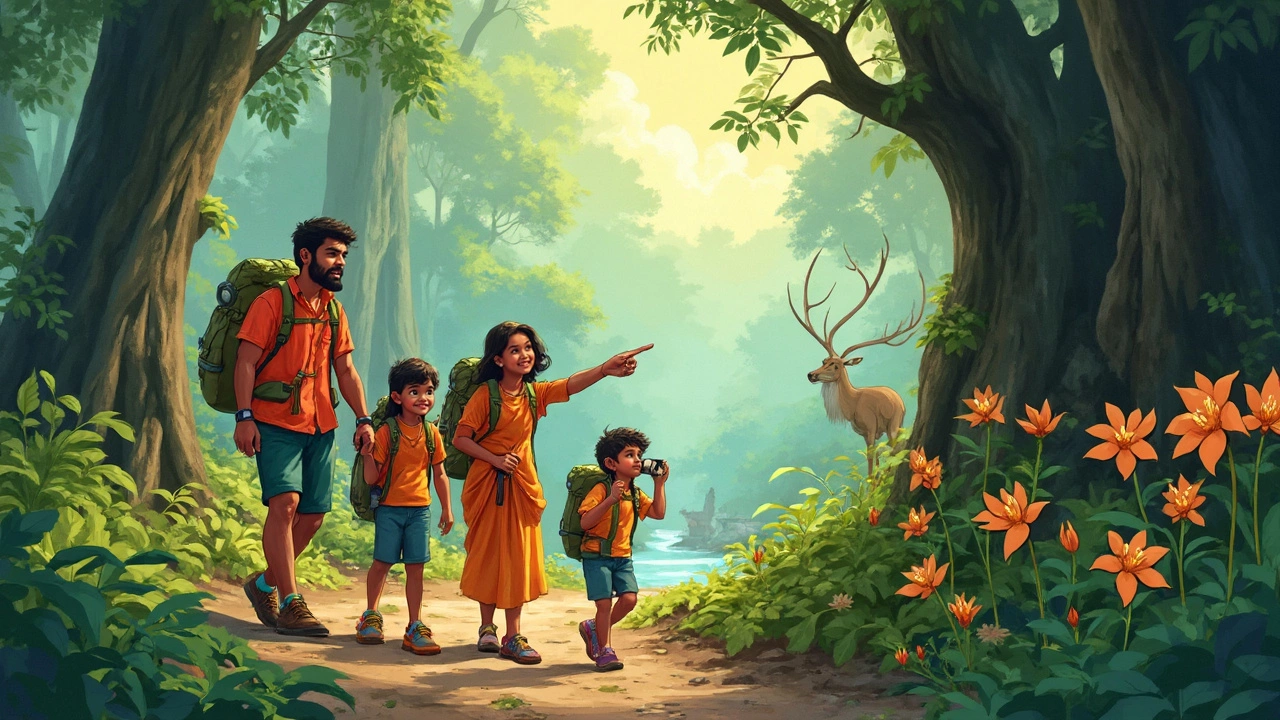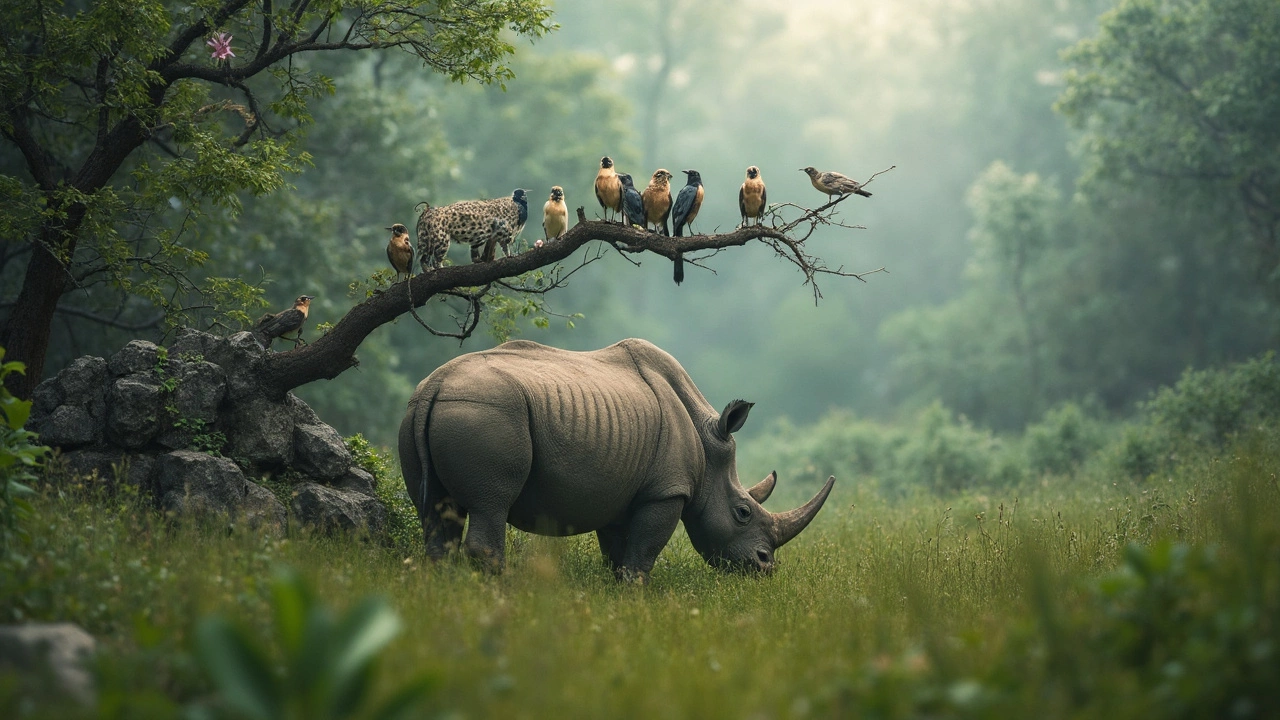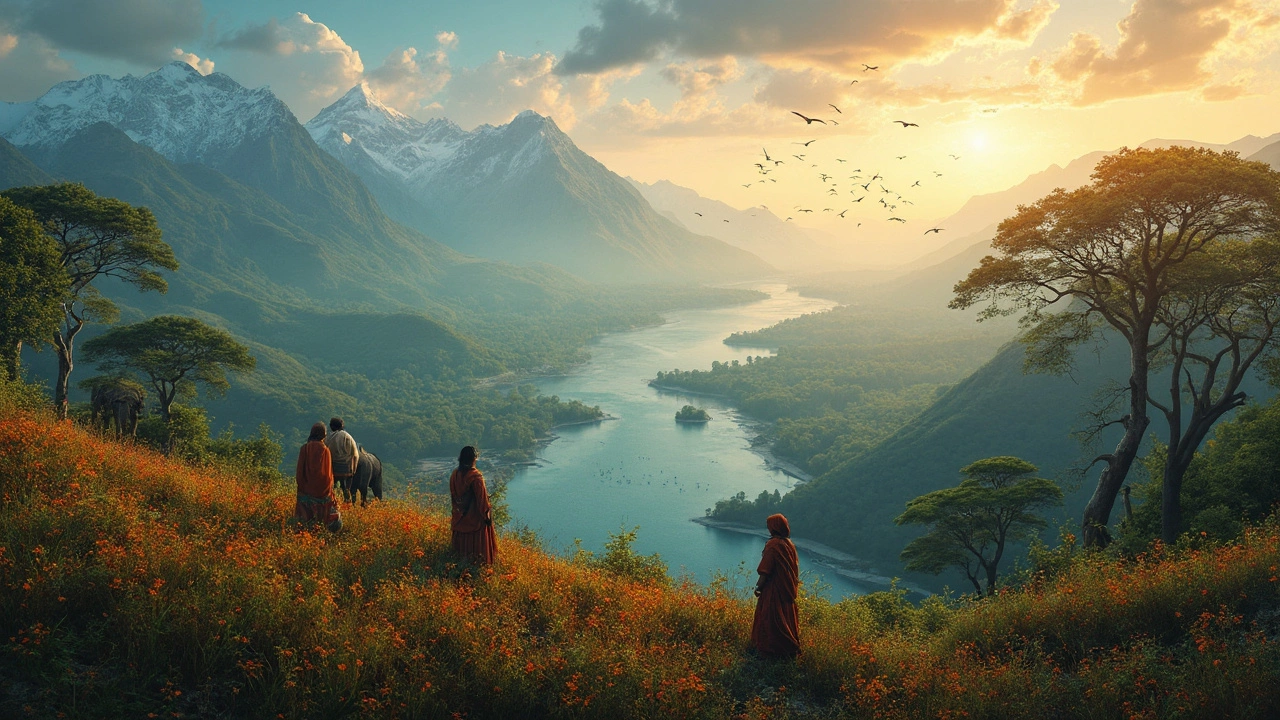Think you’ve seen India? Not unless you’ve explored its natural heritage sites. These aren’t your average touristy places; these are UNESCO world heritage zones packed with wild animals, rare plants, and epic landforms. India has seven such natural wonders, and each one is totally unique—no cookie-cutter experiences here.
Whether you’re a wildlife fan, someone who loves hiking, or just want serious bragging rights on Instagram, knowing where these sites are and what they offer makes all the difference. The best part? These places aren’t just about pretty views—they’re full of stories about how nature survives, adapts, and sometimes fights back.
Figuring out the basics—like which parks protect rhinos, or where you’ll bump into hundreds of bird species—is step one if you want the real deal. And yeah, with India’s size, you don’t want to risk missing out just because you didn’t dig a little deeper. Ready to find out which seven spots actually got the UNESCO tag for natural heritage? Stay tuned, because some of these might surprise you.
- A Quick Look at India's Natural Heritage Sites
- Kaziranga National Park—Home of the One-Horned Rhino
- Keoladeo National Park—Birdwatcher’s Paradise
- The Western Ghats—Biodiversity Hotspot
- Exploring the Rest: Sundarbans, Nanda Devi, Manas, and Great Himalayan National Parks
A Quick Look at India's Natural Heritage Sites
India's got seven spots that have made it onto the UNESCO list for natural heritage. You aren’t just looking at popular parks—these areas are the backbone of the country’s wild spirit. Most people think of castles or temples when they hear “heritage site,” but these are wild places, where animals and forests rule the scene.
So, what sets a natural heritage site apart? It’s not just about beauty. UNESCO looks for places with crazy biodiversity, rare ecosystems, and unique landscapes. Think of these as Mother Nature’s VIP zones—global importance, zero shortcuts allowed, and strict rules for protection.
Here’s what you should know up front:
- These seven sites cover forests, mountains, wetlands, grasslands, and even the world’s largest mangrove delta.
- You’ll see everything from rhinos and tigers to over 370 bird species in just one park.
- Most of these parks are open to visitors, but some have strict rules or limited seasons. Always check schedules before you go.
Below’s a handy table that breaks down all seven sites, their states, and what really makes them stand out:
| Site Name | State(s) | Known For | Year Inscribed |
|---|---|---|---|
| Kaziranga National Park | Assam | One-horned rhino, tigers, elephants | 1985 |
| Keoladeo National Park | Rajasthan | Bird sanctuary, over 370 species | 1985 |
| Manas Wildlife Sanctuary | Assam | Tigers, elephants, wild water buffalo | 1985 |
| Sundarbans National Park | West Bengal | Royal Bengal tigers, mangroves | 1987 |
| Nanda Devi & Valley of Flowers National Parks | Uttarakhand | Himalayan peaks, rare flowers | 1988/2005 |
| Western Ghats | Multiple (Kerala, Tamil Nadu, Karnataka, Maharashtra) | Biodiversity, endemic species | 2012 |
| Great Himalayan National Park | Himachal Pradesh | Himalayan wildlife, glaciers | 2014 |
Whether you want to go birdwatching, spot a tiger, or just breathe in fresh mountain air, each site has a clear reason for being top-tier. Before heading out, make sure you read up on the local rules and best seasons to visit—some animals, like the one-horned rhino, are way easier to spot when the water levels drop.
Kaziranga National Park—Home of the One-Horned Rhino
If you’ve ever pictured a place crawling with wild rhinos, Kaziranga National Park in Assam is it. This park isn’t just famous in India—it has the world’s largest population of the Indian one-horned rhinoceros. That’s a big win for conservation and a major reason why it landed a spot as a UNESCO natural heritage site back in 1985.
Kaziranga covers about 430 square kilometers. That’s huge, and within those boundaries, you get everything from thick grasslands to swampy lagoons and dense forests. It’s not just rhinos here—Kaziranga is also an important home for wild elephants, tigers, and water buffalo, plus a whopping 500+ bird species. Birders, bring your binoculars.
The one-horned rhino is the star. There are more than two-thirds of the global population inside Kaziranga’s borders—over 2,600 rhinos as of the last big census. These guys were almost wiped out a hundred years ago, so Kaziranga’s comeback story is epic.
Want to actually spot a rhino? Best time to visit is from November to April, when the weather is cooler and animals are easier to see. The park shuts during the monsoon (June to September), so don’t plan your trip then. Safaris happen both by jeep and on elephant-back. Jeep safaris cover more ground and let you see not just rhinos but also herds of wild elephants, wild water buffalo, and maybe even a tiger if luck is on your side.
- Early morning safaris have the best wildlife action.
- Don’t forget sunscreen and a hat—the sun can get fierce during the open grassland drives.
- Local guides are super knowledgeable, so hire one for the real stories behind what you’re seeing.
You might think ‘another national park, what’s the big deal?’ But step into Kaziranga and it feels wild in the best way—untouched, loud with animals, and full of marshy, green chaos. There aren’t many places in the world where you can see big mammals like this all in one place. If you love wildlife or just want one Indian adventure no one back home can top, put Kaziranga on your list.

Keoladeo National Park—Birdwatcher’s Paradise
If you’re even a little into birdwatching, Keoladeo National Park in Rajasthan is like hitting the jackpot. People fly in (literally!) from around the world to spot over 370 species of birds here, and that’s not just a random number. Migratory birds from as far as Siberia, Afghanistan, and even China make this their pit stop during winter.
The park, about two hours from Agra, was once known as Bharatpur Bird Sanctuary. It’s not huge—just about 29 square km—but its list of rare feathered guests is long. You’ve probably heard about the Siberian Crane. Keoladeo is one of the few places in India where they’ve been seen after traveling around 4,000 km each year. That's commitment.
But it’s not just about the cranes. You’ve got herons, egrets, storks, pelicans, and even the secretive Sarus Crane, which is the world’s tallest flying bird. Best time to visit? Head there between October and March if you want the migration show. If you go in the summer, you’ll get the resident birds, but the park won’t be as lively.
| Quick Stats—Keoladeo National Park | |
|---|---|
| Location | Bharatpur, Rajasthan |
| UNESCO Status | Since 1985 |
| Total Bird Species | 370+ |
| Area | 29 sq km |
| Best Season | October–March |
| Famous For | Migratory and resident birds |
Need some tips? Bring binoculars—they really make a difference! The easiest way to explore is on a cycle rickshaw. The local rickshaw wallahs have eagle eyes (sometimes literally) and will help you spot hidden birds. Cameras with zoom are perfect, but don’t expect to photograph shy birds up close—they know how to hide. If you want to learn more, there’s even a guide service. They’ll tell you cool stories about how this wetland used to serve as a hunting ground for royalty before turning into a natural heritage site.
- Don’t skip the early morning—birds are most active then.
- Dress in dull colors to avoid scaring the birds.
- Packed food and water are a must; options inside are limited.
- Respect the rules—no blaring music, no feeding animals, and definitely no plucking flowers.
If you want to check off a true birdwatcher’s paradise during your India travels, Keoladeo should be near the top of your list. Even if you’re just a casual visitor, seeing hundreds of birds in one go is something you’ll keep talking about long after your trip ends.
The Western Ghats—Biodiversity Hotspot
If you ask any wildlife lover about the best natural heritage sites in India, the Western Ghats always pop up. Stretching over 1,600 kilometers from Gujarat down to Kerala, this mountain range is like a life-support system for half of India’s plant and animal species. It’s not some hidden place either—over 500 million people live near or depend on these hills for water and food.
Here’s what makes the Western Ghats a superstar among natural sites: It’s got over 7,400 different kinds of plants, including many you won’t find anywhere else. When it comes to wildlife, it’s home to tigers, elephants, leopards, and some seriously weird frogs and lizards that exist nowhere else on the planet. We’re talking unique, not just rare.
This place is a natural heritage site for a reason: UNESCO calls it one of the world’s “hottest hotspots” of biological diversity. Scientists have identified 325 species that are considered globally threatened—most of them are hanging on right here, so if you’re a fan of wild things, you’re in the right place.
| Fun Fact | Number/Stat |
|---|---|
| Total length of Western Ghats | 1,600 km |
| Unique plant species | Over 7,400 |
| Endemic species (not found anywhere else) | 1,500+ plants, 139 mammals, 508 birds |
| Tiger population (estimate) | About 500 |
Want to visit? The best gateway cities are Pune, Goa, and Kochi. Your trip can go in totally different directions—trekking around Munnar’s tea hills, waterfall spotting in Maharashtra’s monsoon, or taking a jeep safari in Periyar. Just keep in mind, some stretches are off-limits during heavy rains (June to September), and you’ll want to go with a local guide for safety and to actually spot the animals—leopards and elephants don’t exactly wave hello.
If you’re heading to the Ghats, pack comfy shoes, rain gear, and binoculars. You’ll need them. Fires, deforestation, and big development projects threaten the fragile balance here, so respectful travel goes a long way. Trust me, the frogs and giant squirrels will thank you.

Exploring the Rest: Sundarbans, Nanda Devi, Manas, and Great Himalayan National Parks
Let’s get into the four other big hitters on the list of India’s natural heritage sites. Each spot is totally different from the others, both in terms of what you’ll see and how you’ll experience it.
Sundarbans National Park is probably the wildest of the lot. Spanning part of West Bengal and creeping into Bangladesh, it’s famous for having the largest mangrove forest on earth, and home to about 100 mighty Royal Bengal tigers that swim across the delta channels. Saltwater crocodiles, spotted deer, and the really shy fishing cats live here too. The park sits deep in a tidal zone—boats are the main way in. Here’s a quick look at some numbers:
| Area (sq km) | Tigers | Other Highlights |
|---|---|---|
| 1,411 | ~100 | Mangrove forests, saltwater crocodiles |
Nanda Devi and Valley of Flowers National Parks give you mountain drama. Nanda Devi stands tall at 7,816m, making it the country’s second-highest peak. The park is mostly for serious trekkers, but you’ll also find super rare animals like the snow leopard and blue sheep (bharal). The Valley of Flowers turns crazy colorful between July and August—think endless meadows packed with wildflowers and butterflies. Want an Instagrammable spot? This is it. But heads up, you can only access it by foot—expect a decent hike.
Manas National Park sits in Assam, right at the foothills of the Himalayas, and borders Bhutan. This place is packed with endangered species you won’t easily spot elsewhere—think Assam roofed turtles, pygmy hogs, golden langurs, and wild water buffalo. It’s a great option if you want a less-crowded safari, since not everyone makes it out there. The river and forest landscapes look straight out of an adventure movie.
Great Himalayan National Park is tucked away in Himachal Pradesh. It’s a paradise for hikers, bird lovers, and folks wanting serious outdoors time. The park protects over 375 fauna species, including the elusive Himalayan brown bear. Several trekking routes cross through remote villages, giving a taste of local mountain life. Best time to visit is between April and June when snow isn’t blocking access and the weather is friendly.
Here’s a quick cheat sheet on what makes each place tick:
- Sundarbans: Boat safaris, tiger spotting, mangroves
- Nanda Devi & Valley of Flowers: High-altitude trekking, wildflowers, snow leopards
- Manas: Jeep and elephant safaris, rare animals, river views
- Great Himalayan: Trekking, untouched forests, birdwatching
Pro tip: Permits, timings, and accessibility change all the time with these parks—always check local updates before planning a visit. If you’re after fewer crowds, try shoulder seasons (just before or after the main tourist rush).
